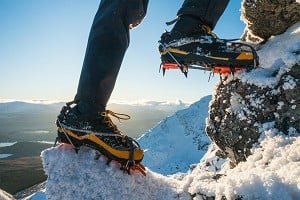
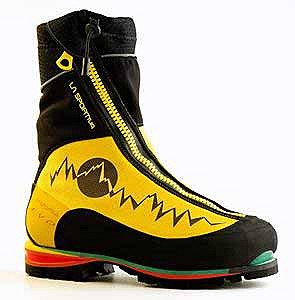
Check out a 360 Degree View of the Batura (Close Popup)
La Sportiva Batura
What La Sportiva Say
The ultimate mountain boot for high elevation alpinism, winter mountaineering and ice climbing
This six layer synthetic boot has an integrated highly water resistant gaiter that opens with a Riri Storm® zipper for excellent water resistant warmth. The inner boot uses thermally expanded PE foam and a polyamide layer for warmth. The shock absorbing PU midsole makes these boots comfortable on long approaches and the 8-9mm TPU midsole stiffener accepts automatic crampons.
WEIGHT: 34.67 oz • 983 g LAST: Nepal CONSTRUCTION: Board Lasted GAITER: Elastic Cordura/ Schoeller® -Dynamic™ with water repellant membrane/ Vibram® rubber rand/ Elastic nylon with impermeable insulating layer/ Riri Storm® zipper UPPER: High tenacity nylon/ Insulated anti-dragging felt/ Insulated PE/ Insulating aluminum layer LINING: Polyamide Thermic layer/ Mesh INSOLE: Insulating Ibi-Thermo 9mm MIDSOLE: 8-9mm TPU/ PU Inserts/ SBR Aircushion SOLE: 8-9mm TPU/ PU Inserts/ SBR Aircushion
Although I've heard people say different things, I find the Batura extremely comfortable, both for climbing and approaches. Sportiva boots usually lend themselves to narrow feet and the Batura is no exception. To begin with there was a slight pressure point on the outside of the balls of my feet, however after a few days of use this sorted itself out. I've worn the Baturas on a number of long approaches through steep loose moraine and steep lateral traverses and have found them to perform brilliantly. The light design and low ankle means that in place of stiffer support you have a greater level of movement and consequently jumping from one loose block to another and negotiating loose scree is made significantly easier. Also by walking with the gaiter undone and strapped around the back you can keep your feet cool resulting in dryer feet when it matters.
INTEGRAL GAITOR
One immediate difference with the Batura's from the Phantom Lites is that the integral gaiter reaches higher up the lower leg. As well as this being good for preventing wet feet when wading though deep snow it also means that the lower leg of your trouser can be tucked in to the gaiter securely. I've been wearing them like this for a while now and as well as it being a good way of keeping your trousers from being ripped its also a lot safer. The amount of times I've nearly tripped up on my own trouser leg while unroped is enough to learn that this is a worthwhile thing to do.
I find the Batura extremely comfortable, both for climbing and approaches.

HEEL LIFT
A fundamental problem with lightweight, minimal leather boots such as the Baturas and Phantoms is heel lift. Nearly everyone I've spoken to has shared this problem, which is inevitable when you make a boot designed to front point for long periods of time and move over steep ground with such a low ankle. With a higher ankle more leverage is required through the ankle joint to make the heel lift, whereas with the Baturas the boot isn't stiff enough to prevent this. This however was only very noticeable for the first couple of days I used them, now it hardly presents a problem.
Technical climbing is where this boots excels. The dexterity and feel that these boots provide will have you thinking you're wearing rock shoes. Whether it be directing your points on to a small edge or aiming for a small blob of ice, the accuracy which you can move with is brilliant. Again, this is greatly down to the flexibility the low cut ankle gives you. It does mean that calf pump is a problem when standing around on steep ice for any length of time.
WILL SIM USING THE BATURA ON THE CROZ SPUR
SOLE CONSTRUCTION OF THE BATURA
What is an Impact Brake System?
An innovative sole (patent pending) developed in collaboration with Vibram® designed to soften the negative impact while pounding the ground.
The inclined position of the lugs allows a reduction by 40% that the impact of the foot, leg and back endure with each step while walking on hard ground. Further, the sole offers a better grip on very steep terrain.
What is an SBR Aircushion
A shock-absorbing system incorporated inside some soles and not visible from outside. A honeycomb heel grid flexes upon impact of the shoe with the ground and contributes to shock absorption.
It's always hard to gauge just how warm a boot is as some people have better circulation than others. Therefore, a winter boot for one person may be a summer only boot for others. I've got pretty good circulation and I'd use these boots for winter day hits and ice cragging, but for routes which may require multiple days something a bit warmer with a removable inner would be advisable. I've climbed big routes in temps as low as -10 and other than numb toes at belays and hot aches shortly afterwards the boots have been fine.
Due to the gaiter-boot in one design the Batura takes a little while to dry compared to an inner-shell design. Although no problem when you're returning to a warm house every night it can be really annoying at bivis, when they will consequently freeze. Having something that will brush every little piece of ice or snow off the boot before snuggling up with them in your sleeping bag is essential.
At 1.8 kilograms for the pair the Batura is pretty light. It seems almost as light as it is possible to make a boot fit for these purposes; Talking to a ski-mountaineering racer who owned a pair of carbon fibre boots weighing 490grams each I thought with some adaptation they'd make an amazing alpine boot, but it turns out that they'd disintegrate if knocked against rock!
DURABILITY
A big issue I've found with the Baturas is durability. Particularly the rubber seal at the toe, which seems to suffer from the crampon toe strap rubbing and has now come apart from its self on one boot. Others have had the same issue and used some special shoe glue to reinforce it which seems to have worked well, but a solution to a problem which shouldn't exist. Other things to watch out for are the zip and toe. A friend had the zip “explode” in his hands and the bit of the toe which the crampons clip to snap off within 30 minutes of each other while attempting to solo the Peutrey Integrale on Mont Blanc. This was followed by a death-defying bail down the back side of the Blanche and across the Freney glacier. Its worth noting that these cases of durability issues have all been experienced by people who wear the boots almost day in day out, and therefore perhaps not the best indication of durability for the average, casual user who may only wear the boots twenty days a year.
CRAMPON USE
I've used both technical and regular strap-on mountaineering crampons with the Baturas. The Grivel Rambo 4's fit the boot brilliantly with no sliding from side to side and so far no unclipping themselves. This is a problem I found with these crampons and my previous boots when they'd decide to become unfastened at inconvenient times. My strap on 12 point mountaineering crampons are a little wider which meant that the narrow shape of the Batura sole could slide around making lateral traversing with flat feet uncomfortable. This is all unique to what crampon you're using but its worth keeping in mind that the Batura is very slim and most strap on flexible crampons are quite wide.
SUMMARY
When writing a review for a product which is so reliant on the specific needs and requirements of the particular user its hard to compose a fair summary. For example, I suffer a little bit from heel lift in this shoe, but will you? I find them a relatively warm winter shoe but will everyone else? Its not like writing about a new wire gate which is or isn't 32 grams. So with that in mind treat everything as guidance and think how your unique needs fit this boot.
What I would say is that this boot is perfect for: Winter alpine routes when you're going to be moving continuously and ending in the valley. Technical winter climbing such as icefall cragging and Scottish mixed (the Batura would make an excellent Scottish boot, I just haven't had a chance to test it out yet), and summer alpine- not too warm, but warm enough for the coldest of summer days.
ABOUT WILL SIM
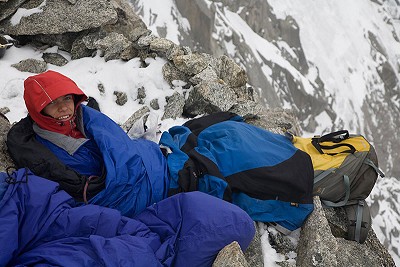
About La Sportiva, N.A.
Our mission is to bring you the best technical footwear to explore the outdoors. For 80 years we have been producing innovative footwear and we are looking forward to the next 80 years. Produced and designed in a small mountain town at the foot of the Dolomites, La Sportiva supports 140 families in a unique and enviable environment. Everyday the mountains surround the people who handcraft your shoes. Being mountain based and family run allows us to draw on eight decades of experience handed down through the generations. With this heritage we can focus on the future and meld new technologies, ideas and innovation with our rich knowledge of shoe making to give you the most amazing products on the market. Products that let you go where you dream to go, do what you dream to do and live how you want to live.

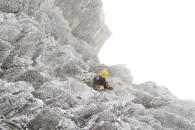

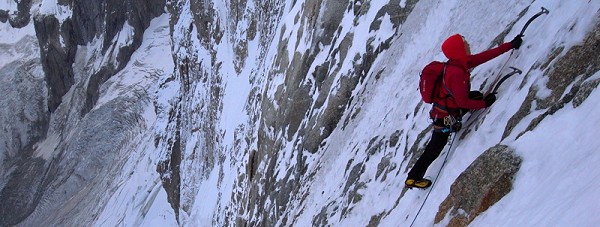
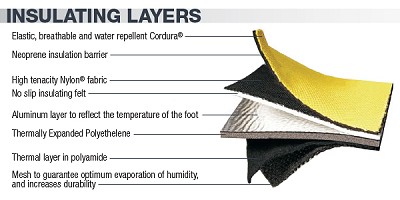

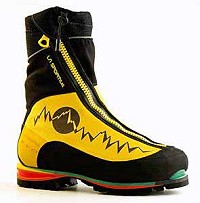

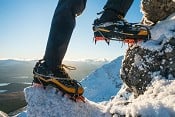
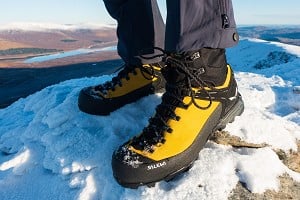
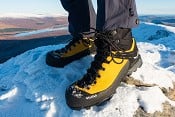
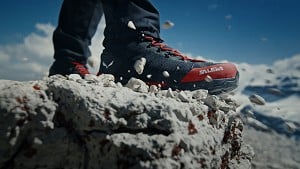

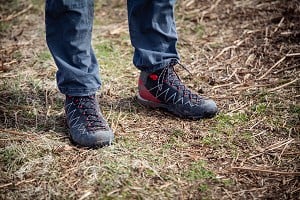

Comments